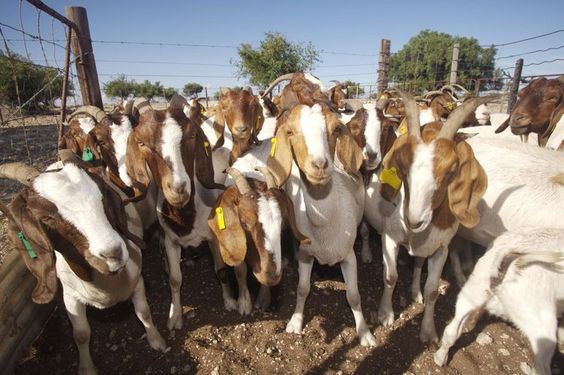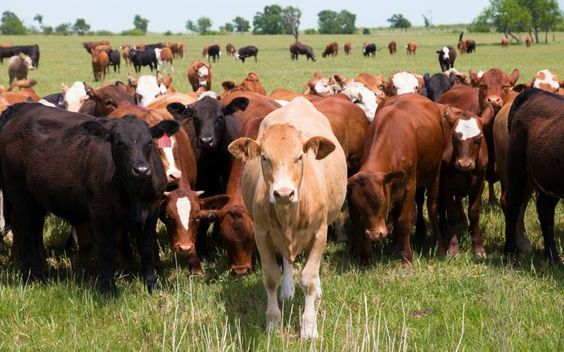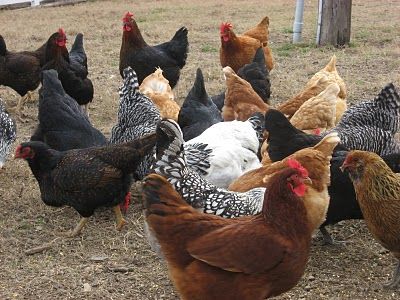Economical Cows: A Complete Guide to Sustainable Livestock Farming
Economical Cows,livestock farming has long been a cornerstone of rural economies. However, the rising costs of feed, healthcare, and farm management have placed significant pressure on cattle farmers to make their operations more cost-effective. Enter the concept of the “economical cow” a term increasingly used to describe cattle breeds and farming practices that prioritize sustainability, efficiency, and affordability.
What is an Economical Cow?
An economical cow refers to a breed or individual animal that offers a favorable balance between its maintenance costs and its productivity, making it highly cost-effective for livestock farmers. The concept of an economical cow goes beyond mere financial savings it is about optimizing the entire farming process to achieve the highest level of efficiency with the least resource input. Economical cows are characterized by their ability to convert feed into productive outputs, such as milk or meat, more efficiently than average cows, which translates into lower costs and higher profitability for farmers.
One of the primary ways that economical cows reduce costs is through feed efficiency. Feed is often the largest expense in livestock farming, and cows that require less feed to produce the same or higher quantities of milk or meat significantly lower a farm’s operational costs. These cows can thrive on fewer inputs, meaning farmers can optimize the use of available resources, reducing wastage and maximizing returns.
Another important factor is health resilience. Economical cows are often bred or selected for traits that make them hardier and more resistant to common diseases, environmental stressors, or climate challenges. This reduces veterinary costs and the need for expensive healthcare interventions, further lowering the overall cost of maintaining the herd.
In terms of productivity, economical cows often offer a high milk yield or significant body mass gain per dollar spent on their care. This high productivity, combined with low maintenance costs, makes them a valuable asset in any livestock farming operation.
The Need for Economical Cows in Livestock Farming
The livestock farming industry is under increasing pressure from multiple directions, making the need for economical cows more critical than ever. As global demand for meat and dairy products continues to rise, farmers are struggling to keep up while also balancing financial viability and environmental responsibility. The costs of feed, land, labor, and healthcare for livestock have surged, squeezing profit margins and making it harder for farmers to operate sustainably. In parallel, the agricultural sector is facing heightened scrutiny over its role in contributing to environmental degradation, particularly in terms of resource depletion and greenhouse gas emissions.
This convergence of challenges has created a demand for innovative solutions that allow livestock farming to remain both profitable and sustainable. Economical cows have emerged as one of the most practical and effective strategies for addressing these issues. These cows are specifically bred and managed to maximize productivity while minimizing resource consumption, helping farmers reduce their overall operational costs. By selecting breeds with high feed efficiency, farmers can reduce the amount of feed required to produce milk or meat, significantly lowering one of the most substantial expenses in livestock farming.
Moreover, economical cows often exhibit greater resilience to diseases and environmental stressors, meaning that healthcare costs are reduced, and losses due to poor animal health are minimized. Their higher reproductive efficiency ensures a steady output, which allows farmers to meet market demands without excessive investment in new livestock.

Priority for Sustainable Agriculture
Raising economical cows should be a top priority for farmers and the agricultural community due to its numerous advantages that address financial sustainability, environmental responsibility, and animal welfare. As global demands for food increase alongside the need for eco-conscious farming practices, economical cow farming provides a clear pathway to achieving both profitability and sustainability. Here are the key reasons why this approach must be prioritized:
1. Cost Savings: A Vital Financial Strategy
Economical cow farming significantly reduces costs, making it a priority for farmers seeking financial sustainability. Feed, one of the largest expenses in livestock farming, is used more efficiently by economical cows, resulting in higher yields with fewer inputs. Additionally, these cows often have greater natural resilience to diseases, cutting down on expensive veterinary bills. The overall reduction in operational costs leads to increased profit margins, helping farmers not only survive but thrive in a competitive agricultural market.
2. Sustainability: A Pressing Environmental Imperative
Sustainability is no longer a choice but a necessity, and economical cows are central to reducing the environmental impact of livestock farming. Their ability to thrive on fewer resources such as feed, water, and land makes them crucial in conserving natural resources. By producing fewer greenhouse gas emissions per kilogram of meat or liter of milk, economical cows help farmers meet environmental standards and appeal to eco-conscious consumers. Prioritizing economical cows helps align farming practices with global efforts to combat climate change and ensures that the agricultural sector contributes positively to environmental preservation.
3. Improved Animal Welfare: A Moral and Economic Priority
Animal welfare is an increasingly important consideration for both consumers and policymakers, and economical cow farming helps meet these expectations. These cows are typically more robust, requiring less medical intervention and resulting in healthier, less stressed animals. This not only leads to higher productivity but also meets ethical standards, which are becoming a priority for modern consumers who seek responsibly farmed products. Prioritizing breeds with natural resilience improves the overall well-being of livestock, reflecting positively on the farming operation.
4. Enhanced Farm Viability: Ensuring Longevity for Small and Medium Farms
The economic pressures on small and medium-sized farms can be immense, and adopting economical cows provides a critical strategy for ensuring their viability. By lowering costs and increasing output, these cows help farmers maintain profitability even in tough market conditions. In rural areas, where agriculture forms the backbone of the economy, prioritizing economical cows ensures that local farms remain competitive and continue to provide employment and food security.
Key Characteristics of Economical Cows
Economical cows possess several key traits that set them apart from other cattle breeds. These characteristics ensure that they deliver high productivity with minimal resource input, making them a valuable asset in modern livestock farming. While the specific attributes of economical cows can vary depending on the breed, farm management practices, and the farmer’s goals, most share several common traits:
- Feed Efficiency: One of the most defining traits of economical cows is their ability to convert feed into body mass or milk with exceptional efficiency. This trait significantly reduces the overall cost of feeding, as less feed is required to produce the same amount of output. Whether raised for beef or dairy production, these cows provide a high return on investment by optimizing the use of available resources.
- Hardiness: Economical cows are typically more resilient to diseases, climate extremes, and environmental stressors. Their robust health translates to lower healthcare costs, as farmers spend less on veterinary interventions and medications. Their hardiness also means they can thrive in a variety of environmental conditions, making them ideal for regions with challenging climates.
- Reproductive Efficiency: Another key feature is their higher fertility rates and shorter calving intervals. This ensures a steady supply of offspring, contributing to consistent productivity. These traits also reduce the downtime between productive cycles, allowing farmers to maximize herd growth or replacement without significant delays.
- Longevity: Economical cows tend to have longer productive lifespans, meaning they remain in peak condition for more years compared to average cattle. This reduces the need for frequent herd replacements, cutting costs associated with breeding or purchasing new livestock.
- Lower Carbon Footprint: Thanks to their superior efficiency, economical cows produce fewer greenhouse gas emissions per kilogram of meat or liter of milk. This makes them an environmentally friendly choice, aligning with the growing global emphasis on sustainability in agriculture.
Economic Benefits of Raising Economical Cows
There are numerous economic benefits associated with raising economical cows, both for individual farmers and for the broader agricultural economy. Below, we explore some of the most significant advantages.
1. Reduced Feed Costs
Feed is one of the largest expenses in livestock farming, often accounting for 50-70% of the total cost of raising cows. Economical cows, particularly those with strong feed conversion ratios (FCRs), require less feed to produce the same amount of meat or milk as other breeds. By reducing feed intake without sacrificing productivity, these cows can significantly lower operational costs for farmers.
2. Lower Healthcare Expenditures
Economical cows are generally hardier and more resistant to common diseases, meaning they require less medical attention and fewer costly treatments. This reduces the need for expensive veterinary care and medications, which can be a major drain on a farm’s finances.
3. Increased Longevity and Productivity
Economical cows tend to have longer productive lives, which reduces the frequency with which farmers need to replace older animals with younger, less productive ones. This lowers the cost of maintaining the herd, as fewer resources need to be invested in raising new animals to replace older ones.
4. Higher Return on Investment (ROI)
The combination of reduced costs, increased efficiency, and consistent productivity means that farmers who raise economical cows can achieve a higher return on investment (ROI). This makes livestock farming more profitable and allows farmers to reinvest in their operations, whether through expanding their herd, upgrading equipment, or adopting new farming practices.

Environmental Benefits of Raising Economical Cows
In addition to the economic benefits, raising economical cows also has significant environmental advantages. The following are some of the key environmental benefits associated with this approach to livestock farming.
1. Reduced Resource Consumption
Economical cows require fewer resources to maintain, including feed, water, and land. This helps to reduce the environmental strain associated with livestock farming, particularly in regions where resources are limited or where farming practices can have a significant impact on the local ecosystem.
2. Lower Greenhouse Gas Emissions
Because economical cows are more efficient at converting feed into body mass or milk, they produce fewer greenhouse gas emissions per kilogram of meat or liter of milk. This is an important consideration in an era where the environmental impact of livestock farming is under increased scrutiny, particularly in terms of its contribution to climate change.
3. Improved Land Management
Economical cows often require less grazing land or are more effective at grazing in a sustainable manner. This can help prevent overgrazing and soil degradation, which are significant problems in many livestock farming regions.
4. Support for Sustainable Agriculture
By promoting the use of breeds that are naturally more efficient and resilient, raising economical cows supports the broader goals of sustainable agriculture. This includes reducing the environmental footprint of farming, minimizing resource wastage, and promoting the long-term health of the agricultural ecosystem.
Breeds of Economical Cows
Certain breeds of cattle are known for their cost-effectiveness and sustainability. Below are some of the most well-known breeds of economical cows, along with their defining characteristics.
1. Jersey Cows
Jersey cows are a popular choice for dairy farming due to their high milk yield and low maintenance costs. These cows are known for their ability to produce high-quality milk with high butterfat content, making them particularly valuable for farmers who produce premium dairy products. In addition, Jersey cows require less feed than larger dairy breeds, making them a cost-effective option.
2. Holstein Cows
Holsteins are the most common dairy cows worldwide, and they are known for their high milk production. While they may require more feed than some other breeds, their impressive milk yield ensures that they remain a cost-effective option for large-scale dairy farming operations.
3. Angus Cows
Angus cows are one of the most popular beef cattle breeds, prized for their ability to produce high-quality beef with minimal input. These cows are hardy and well-suited to a variety of climates, making them a versatile and economical option for beef farmers.
4. Hereford Cows
Hereford cows are known for their resilience and ability to thrive in a range of environments. They are particularly well-suited to extensive grazing systems, where they can efficiently convert grass into body mass. Herefords are also known for their docile temperament, which can reduce handling costs and improve herd management efficiency.
5. Simmental Cows
Simmental cows are a dual-purpose breed, meaning they are used for both dairy and beef production. This versatility makes them an economical choice for farmers who want to diversify their operations. Simmental cows are known for their excellent feed conversion efficiency and their ability to produce both high-quality milk and beef.
Goals of Economical Cow Farming
Economical cow farming is not just about reducing costs; it also focuses on long-term sustainability and profitability. Here are some of the key goals associated with this approach to livestock farming.
1. Maximizing Efficiency
The primary goal of economical cow farming is to maximize efficiency in all aspects of the farming operation, from feed conversion to reproduction rates. This helps farmers to reduce costs and increase profitability, while also minimizing the environmental impact of their operations.
2. Sustainable Resource Use
Another important goal of economical cow farming is to promote the sustainable use of resources. This includes reducing the amount of land, water, and feed required to maintain the herd, as well as minimizing the use of chemical inputs like fertilizers and pesticides.
3. Improving Animal Welfare
Economical cow farming also aims to improve the welfare of the animals by selecting breeds that are naturally hardy and resilient. This reduces the need for intensive healthcare interventions and ensures that the animals are able to live healthy, productive lives.
4. Supporting Rural Economies
By reducing the costs associated with livestock farming, economical cow farming can help to support rural economies by ensuring that small and medium-sized farms remain viable. This is particularly important in regions where livestock farming is a key source of income and employment.
Ideas for Economical Cow Farming
For farmers interested in raising economical cows, there are several innovative ideas that can help to further reduce costs and improve sustainability. Here are some strategies to consider.
1. Implementing Rotational Grazing Systems
Rotational grazing systems can help to improve pasture quality and reduce the need for supplemental feed. By allowing cows to graze in different areas at different times, farmers can ensure that the land is not overgrazed, which can lead to soil degradation and reduced forage availability.
2. Incorporating Agroforestry
Agroforestry is the practice of integrating trees and shrubs into the grazing landscape. This can provide shade and shelter for the cows, improve soil health, and increase the biodiversity of the farm. In addition, certain tree species can provide additional sources of feed or fodder for the cows.
3. Utilizing Precision Farming Technology
Precision farming technology can help farmers to monitor and manage their herds more effectively. For example, sensors can be used to track the health and productivity of individual cows, allowing farmers to identify potential issues before they become serious problems. This can reduce healthcare costs and improve overall herd efficiency.
4. Exploring Alternative Feed Sources
Alternative feed sources, such as food waste or byproducts from other agricultural processes, can help to reduce feed costs. For example, some farmers have had success feeding their cows brewers’ grains, which are a byproduct of the beer-making process.

Advantages of Economical Cow Farming
Raising economical cows offers numerous benefits, not only to individual farmers but also to the broader agricultural industry. These advantages encompass financial, environmental, and social aspects, making economical cow farming a sustainable and profitable choice. Below are some of the most significant benefits:
1. Cost Savings
One of the most notable advantages of economical cow farming is the potential for substantial cost savings. Economical cows are more efficient in converting feed into milk or body mass, which reduces feed expenses—one of the largest costs in livestock farming. Additionally, these cows often exhibit better health and resilience to diseases, meaning lower veterinary costs and fewer healthcare interventions. By reducing these major operational expenses, farmers can significantly improve their profit margins, making their operations more financially sustainable.
2. Sustainability
Economical cows require fewer resources to maintain, which makes them an essential component of sustainable agriculture. They consume less feed, water, and land, all while producing the same, if not higher, levels of output compared to other breeds. This efficient use of resources helps reduce the overall environmental footprint of livestock farming. In an era where consumers and policymakers are increasingly concerned about climate change and environmental degradation, raising economical cows aligns with the global push towards more sustainable farming practices.
3. Improved Animal Welfare
Economical cows are typically breeds that are naturally hardy and resilient, reducing the need for intensive healthcare or medical interventions. These animals are more resistant to common diseases and environmental stressors, resulting in healthier cows that require less human intervention. Improved animal welfare not only enhances the quality of life for the cows but also reduces stress-related illnesses, which can negatively impact productivity.
4. Enhanced Farm Viability
For small and medium-sized farms, which often operate on thin margins, economical cows provide a lifeline. By lowering the costs associated with feed, healthcare, and labor, these cows help ensure that farms remain profitable and sustainable. This is particularly important in rural areas where livestock farming is a crucial source of income and employment. Economical cow farming allows these farms to compete with larger agricultural operations, ensuring that they can continue to provide local food products and support their communities.






